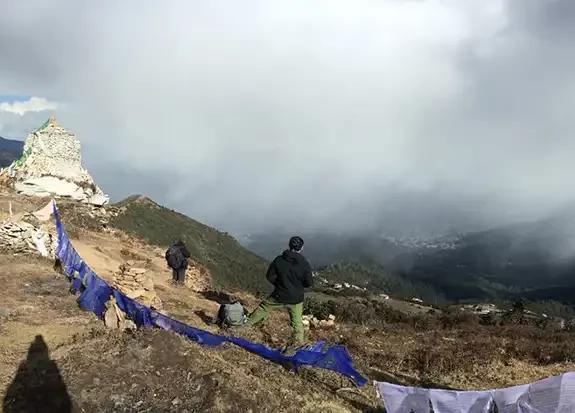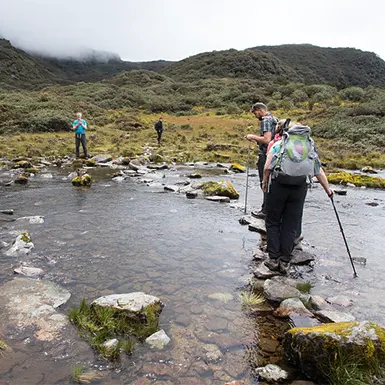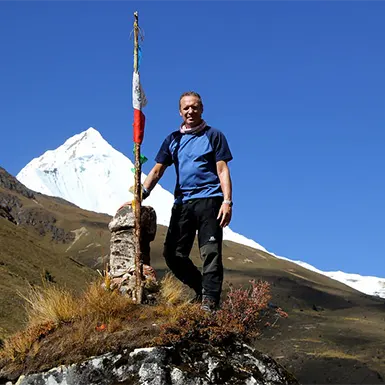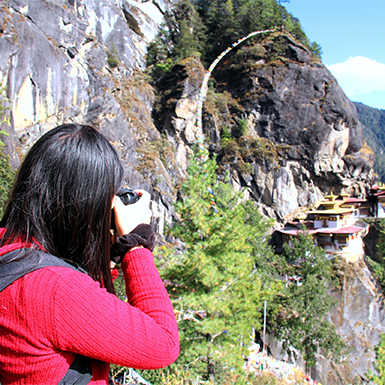In the heart of the majestic Himalayas, Bhutan stands as a Himalayan kingdom that beckons adventurers and nature enthusiasts alike. Renowned for its breathtaking landscapes and pristine natural beauty, Bhutan has earned its reputation as a trekker’s paradise.
With its awe-inspiring Himalayan vistas, Bhutan offers a captivating blend of rugged terrains, lush forests, and towering peaks. This tiny kingdom, often called the “Land of the Thunder Dragon,” boasts some of the most alluring trekking routes in the world.
Bhutan’s trekking trails wind through dense forests, meander alongside pristine rivers, and lead you to serene mountain villages that seem frozen. The country’s commitment to environmental preservation ensures that these routes remain unspoiled and provide a truly immersive experience for trekkers.
For those seeking an unforgettable adventure, Trekking in Bhutan is an opportunity to explore a world where tradition and nature coexist harmoniously. So, if you yearn to witness the grandeur of the Himalayas up close and personal, Bhutan is the place to be.
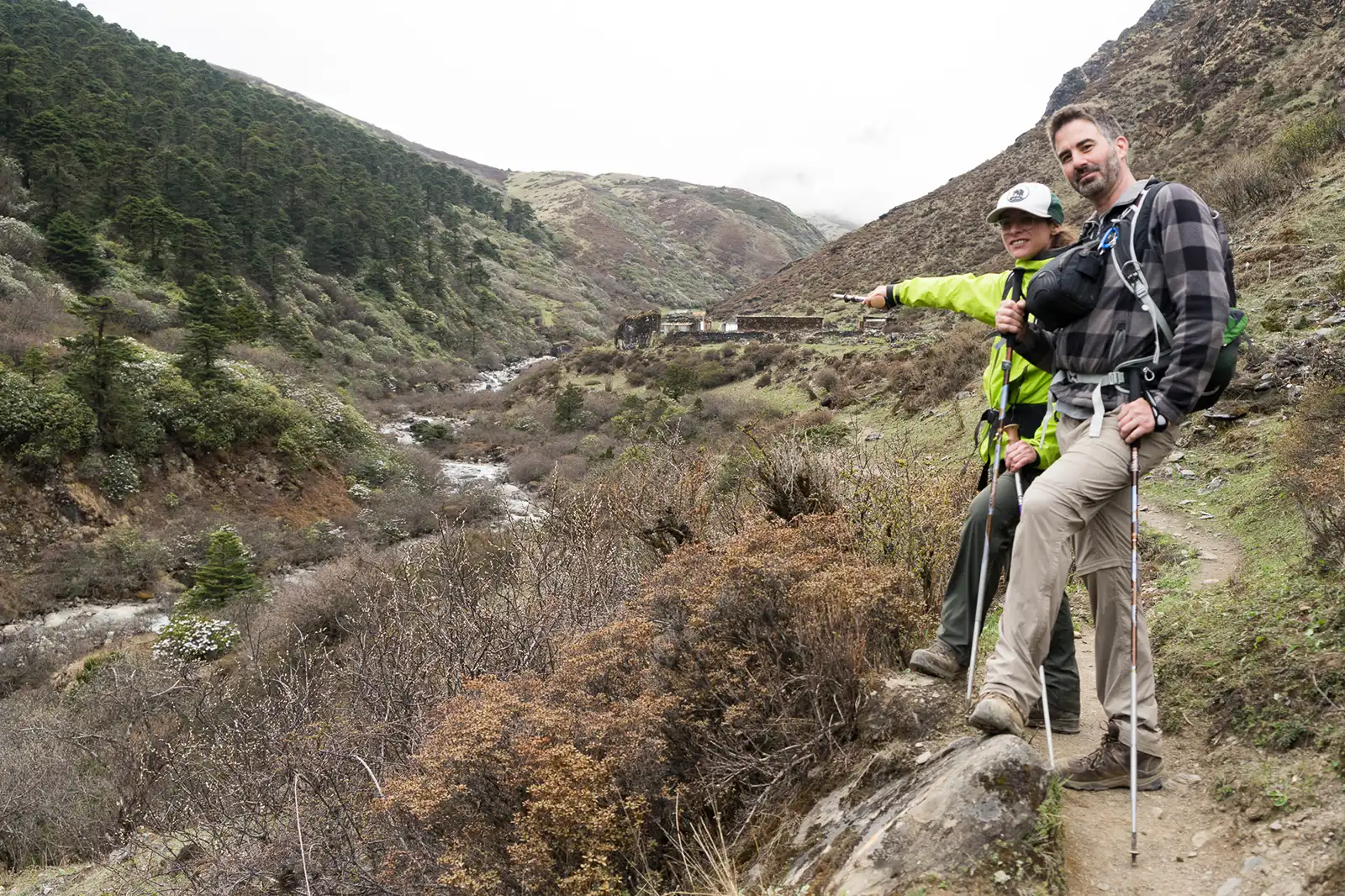
Bhutan’s Trekking Trails
Bhutan’s Trekking Trails offer a rich tapestry of diversity, catering to adventurers of all levels and preferences. Whether you seek a stroll through verdant landscapes or a challenging expedition into the high Himalayas, Bhutan has it all.
Among the most celebrated treks in Bhutan is the Snowman Trek, an epic journey that takes you through remote villages, glacial valleys, and high mountain passes. This trek is an actual test of endurance, spanning several weeks and crossing altitudes exceeding 5,000 meters.
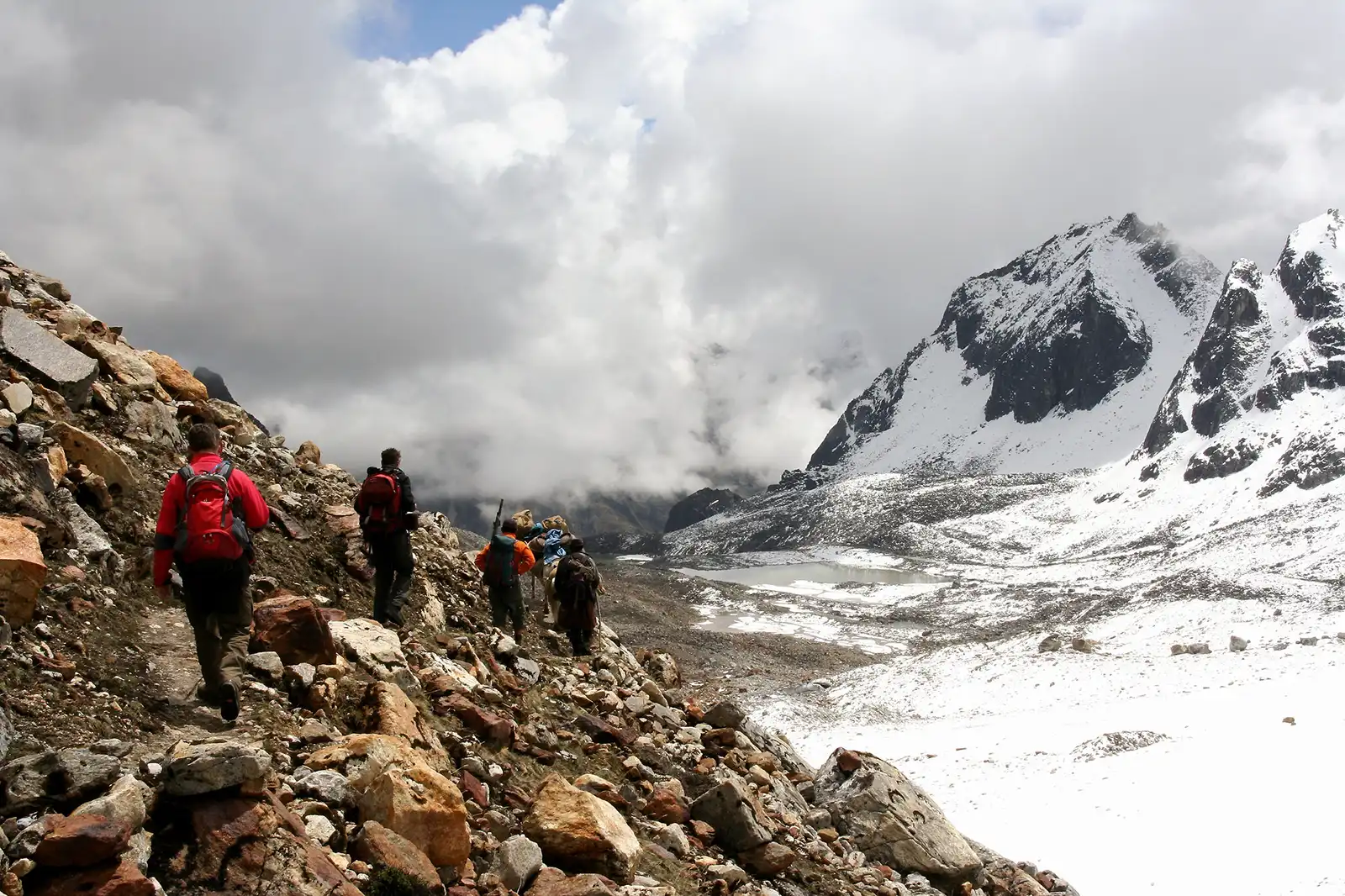
The Druk Path Trek presents an enticing option for those looking for a shorter yet equally captivating experience. This trek offers a blend of lush forests, pristine lakes, and stunning views of the Himalayas, all achievable within a week.
Another gem in Bhutan’s trekking crown is the Jomolhari Trek, renowned for its breathtaking vistas of the sacred Jomolhari Mountain. This trek provides a moderate challenge, taking you through alpine meadows, dense rhododendron forests, and picturesque valleys.
Bhutan’s Trekking Trails offer something for everyone, from novices to seasoned trekkers. The varying difficulty levels ensure that whether you’re an experienced mountaineer or a casual hiker, you can find a trek that suits your preferences and abilities. Explore the enchanting landscapes, immerse yourself in Bhutan’s unique culture, and create unforgettable memories along these diverse and captivating trails.
Planning for Trekking in Bhutan
Regarding Trekking in Bhutan, careful planning is essential to ensure a safe and enjoyable adventure. Here are vital aspects to consider when planning your trek:
Choosing the Right Time:
Selecting the best time for trekking in Bhutan is crucial. The ideal trekking seasons are spring (March to May) and autumn (September to November). The weather is relatively stable during these periods, with clear skies and pleasant temperatures, making it perfect for exploring Bhutan’s trails.
Permit Requirements:
Bhutan places high importance on preserving its pristine environment and unique culture. Therefore, trekking in Bhutan requires permits, which can only be obtained through a licensed tour operator like Peregrine Treks and Tours. These permits help manage and protect the fragile ecosystems along the trekking routes and regulate the number of trekkers to ensure a sustainable experience.
Licensed Tour Operator:
Engaging a licensed tour operator is not just a requirement; it’s a wise choice for your trekking adventure. Tour operators like Peregrine Treks provide expert guidance, handle permit applications, arrange transportation, and offer invaluable local insights. We also ensure that you adhere to Bhutan’s responsible tourism principles, minimizing environmental impact and respecting local customs.
By planning your trek during the right season, obtaining the necessary permits, and following their guidance, you can make the most of your Trekking in Bhutan experience while contributing to the conservation and preservation of this Himalayan jewel.
Related Article
Things to know before the Bhutan Tour

Essential Trekking Gear
When starting on a trekking expedition in the captivating terrain of Bhutan, it’s crucial to have the right gear and pack efficiently. Here’s a comprehensive checklist of essential trekking gear, along with tips for selecting clothing and footwear and the significance of packing light and intelligent:
Essential Trekking Gear Checklist:
Backpack: Choose a comfortable, well-fitting backpack to carry your gear.
Trekking Boots: Opt for sturdy, waterproof boots with ankle support for Bhutan’s diverse landscapes.
Clothing Layers:
- Moisture-wicking base layers to keep dry
- Insulating layers for warmth
- Lightweight, breathable outer shell for rain and wind protection
Trekking Pants: Select durable, quick-drying pants with zip-off legs for adaptability.
Headgear:
- Wide-brimmed hat or cap for sun protection.
- Warm hat or beanie for cooler evenings.
Gloves: Carry insulated, waterproof gloves for cold and wet conditions.
Socks: Opt for moisture-wicking, cushioned trekking socks to prevent blisters.
Rain Gear: Ensure a quality rain jacket and pants for unexpected downpours.
Sleeping Bag: Pack a lightweight, compact bag suitable for expected temperatures.
Trekking Poles: These provide stability and reduce knee strain during descents.
Water Purification: Include water purification tablets or a portable filter for safe drinking water on the trail.
First Aid Kit: Prepare a basic kit with bandages, antiseptic wipes, pain relievers, and personal medications.
Packing Tips:
Layering: Choose clothing that can be layered for versatility, allowing you to adapt to changing weather.
Pack Light: Avoid overloading by prioritizing lightweight and multipurpose items. Remember, you must carry everything you bring.
Quality Over Quantity: Invest in high-quality, durable gear that performs well in challenging conditions.
Footwear: Before your journey, break in your trekking boots to prevent blisters and discomfort.
Smart Packing: Utilize compression sacks or packing cubes to maximize space and maintain organization.
Trekking in Bhutan’s breathtaking landscapes demands preparedness, and the right gear ensures comfort and safety. By thoughtfully selecting your gear, clothing, and footwear and by adopting a “less is more” approach, you’ll be equipped for a memorable and enjoyable trekking experience amidst the stunning scenery of Bhutan.
Trekkers’ Accommodations
When Trekking in Bhutan, accommodations play a vital role in ensuring a comfortable and memorable experience amidst its stunning landscapes. Here’s an overview of the types of accommodations available, the unique experience of staying in remote mountain villages, and the basic facilities provided during treks:
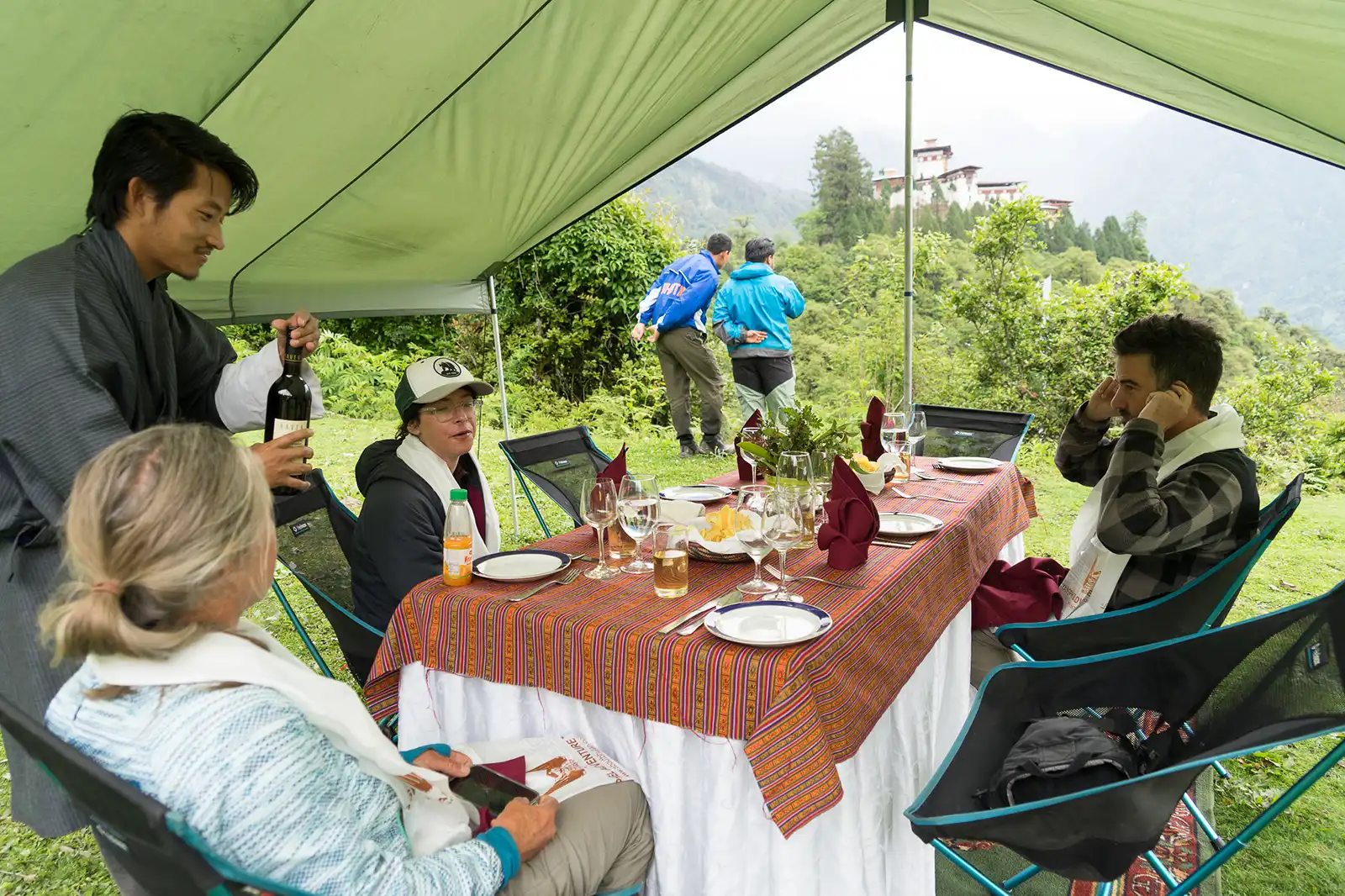
Types of Accommodations:
Tents: Many treks in Bhutan involve camping in tents. Trekking agencies typically set these up and come with sleeping bags and mats. Camping allows trekkers to immerse themselves in nature, surrounded by the pristine beauty of Bhutan.
Lodges: Some popular trekking routes offer simple lodges or teahouses. These lodges provide basic accommodation with shared facilities such as dormitory-style rooms or private rooms with common bathrooms. They offer a warm bed and hearty meals, providing a comfortable respite for trekkers.
Homestays: Trekking in Bhutan often includes staying with local families in remote mountain villages. This unique cultural experience allows trekkers to engage with Bhutanese traditions and hospitality. Homestays typically involve sleeping in a traditional Bhutanese room with shared facilities.
Unique Experience of Staying in Remote Mountain Villages:
Staying in remote mountain villages is a highlight of trekking in Bhutan. It provides an authentic insight into Bhutanese people’s lives, customs, and connections to the natural world. Trekkers can participate in local activities, share meals with villagers, and even join in cultural celebrations. The warmth and hospitality of the villagers create lasting memories and a deeper appreciation for Bhutan’s rich culture.
Basic Facilities Available During Treks:
During treks in Bhutan, basic facilities are provided to ensure the comfort and well-being of trekkers. These typically include:
Trekking Cooks: Experienced cooks who prepare delicious and nourishing meals tailored to trekkers’ preferences and dietary requirements.
Trekking Guides: Knowledgeable guides who lead the way, provide information about the surroundings, and ensure safety.
Porters: Support staff who carry the majority of the trekking gear and equipment, making the journey less strenuous for trekkers.
Portable Toilets: In some areas, portable toilets are set up at camping sites to maintain hygiene and minimize environmental impact.
Campfire and Social Areas: Camping sites often include campfire areas where trekkers can relax and share stories with fellow adventurers.
Trekking in Bhutan offers diverse accommodations, each contributing to a unique and immersive experience. Whether you prefer camping under the stars, staying in simple lodges, or connecting with local families in remote villages, Bhutan’s trekking accommodations ensure a journey filled with natural beauty and cultural enrichment.

The Himalayan Scenery
Trekking in Bhutan unveils a mesmerizing tapestry of Himalayan scenery, where every step reveals breathtaking landscapes that leave trekkers in awe. Here’s a vivid description of the natural wonders you’ll encounter:
Lush Forests: As you start your trek through Bhutan, lush forests paint the landscape in vibrant hues of green. Towering rhododendron trees create a canopy overhead, filtering the sunlight and casting dappled shadows on the forest floor. Moss-covered rocks and ferns line the trail, creating a mystical atmosphere that transports you to a world untouched by time.
Pristine Lakes: Bhutan’s trekking routes often lead you to pristine lakes that mirror the surrounding mountains like nature’s looking glass. These shimmering bodies of water are nestled in serene alpine settings, surrounded by wildflowers and rhododendron blooms during spring. The crystal-clear waters invite trekkers to rest and reflect while enjoying the breathtaking scenery.
Towering Peaks: Bhutan’s Himalayan peaks rise majestically on the horizon, their snow-capped summits piercing the azure sky. Among these giants, Jomolhari and Gangkhar Puensum stand as iconic sentinels, casting a grand shadow over the landscape. Trekkers are treated to unparalleled views of these awe-inspiring peaks as they traverse Bhutan’s mountain trails.
Encounters with Wildlife: Bhutan’s pristine wilderness is a feast for the eyes and a haven for wildlife enthusiasts. As you trek through the rugged terrain, you may come across the elusive blue sheep grazing on high mountain slopes. Birdwatchers will delight in sightings of colorful Himalayan monals and the regal griffon vulture circling above. Lucky trekkers may even glimpse the elusive snow leopard, symbolizing Bhutan’s untamed beauty.
Every step taken while trekking in Bhutan is a journey through landscapes that seem plucked from a dream. The lush forests, pristine lakes, and towering peaks create a symphony of natural beauty that captivates the senses. With each trekker’s tale, Bhutan’s Himalayan scenery leaves an indelible mark, inspiring a profound connection to the majesty of the natural world.
Bhutanese Culture Along the Trails
Trekking in Bhutan is not just a physical adventure; it’s also a cultural immersion that allows trekkers to connect deeply with the local way of life. Here’s an exploration of the cultural experiences you can have along the trails:
Cultural Experiences:
Local Festivals: Depending on the timing of your trek, you may have the incredible opportunity to witness and even participate in local Bhutanese festivals. These vibrant celebrations feature traditional music, dance, and religious rituals, offering a glimpse into Bhutan’s rich cultural heritage.
Village Encounters: Trekking routes often pass through remote Bhutanese villages where you can interact with the locals. Share conversations, learn about their daily routines, and gain insights into their customs and traditions. Bhutanese hospitality is warm and welcoming, making these encounters both enriching and memorable.
Monasteries and Dzongs:
Monasteries: Bhutan is dotted with ancient monasteries with unique charm and history. You may encounter these spiritual sanctuaries nestled amidst the mountains along your trek. The serene ambiance and breathtaking views from these monasteries make them ideal places for reflection and meditation.
Dzongs: Bhutan’s imposing fortresses, known as dzongs, serve as administrative centers and religious institutions. Trekking routes often lead to these architectural marvels, allowing trekkers to explore their intricate artwork, learn about Bhutanese governance, and witness religious ceremonies within their hallowed walls.
The Bhutanese culture is deeply intertwined with Buddhism, and you’ll find prayer flags fluttering in the wind, prayer wheels spinning, and sacred stupas gracing the landscape. Trekkers can join in prayers, receive blessings from monks, and gain a profound understanding of the spiritual significance permeating every corner of Bhutan.
Trekking in Bhutan is a unique blend of physical adventure and cultural exploration. It offers trekkers the chance to connect with the pristine natural beauty of the Himalayas and delve into the heart and soul of Bhutanese culture, forging meaningful connections with the people, their traditions, and their spiritual heritage.
Challenges and Rewards
Trekking in Bhutan’s high-altitude areas presents both physical and mental challenges that, when overcome, lead to remarkable rewards. Here’s an exploration of these challenges and the profound sense of achievement and spiritual connection that accompanies them:
Physical and Mental Challenges:
Altitude: Bhutan’s trekking routes often reach high altitudes, with thin air and lower oxygen levels. This can lead to altitude-related symptoms such as breathlessness, headaches, and fatigue. Trekkers must acclimatize gradually to mitigate these effects.
Rugged Terrain: The mountainous terrain in Bhutan can be demanding, with steep ascents and descents, rocky paths, and unpredictable weather. Stamina and physical fitness are essential to navigate these challenging landscapes.
Isolation: Trekking in remote areas means limited medical facilities and communication access. Trekkers must be prepared for self-sufficiency and adaptability in case of unexpected situations.
Personal Achievements and Rewards:
Pushing Limits: Overcoming physical and mental challenges while trekking in Bhutan is a testament to resilience and determination. Trekking at high altitudes tests your limits and pushes you to discover your inner strength.
Scenic Rewards: The rewards of trekking in Bhutan are abundant. Trekkers are treated to panoramic views of majestic Himalayan peaks, serene alpine lakes, and lush forests. These breathtaking vistas are a visual feast and a reminder of the beauty of the natural world.
Sense of Accomplishment and Spiritual Connection:
Sense of Accomplishment: Completing a challenging trek in Bhutan brings a profound sense of accomplishment. The physical and mental hurdles overcome during the journey instill a newfound confidence and a deep appreciation for personal growth.
Spiritual Connection: Bhutan’s landscape is dotted with monasteries, stupas, and prayer flags that infuse the trekking experience with a sense of spirituality. The serene environment and encounters with monks and locals provide reflection and opportunities for inner peace.
Trekking in Bhutan transcends the physical act of walking through stunning landscapes; it becomes a journey of self-discovery and personal triumph. The challenges faced along the way only amplify the rewards, fostering a deep sense of accomplishment and a spiritual connection with the mystical beauty of Bhutan’s Himalayan terrain.
Responsible Trekking
Bhutan is not just about exploring its breathtaking landscapes; it’s also about treading lightly and respectfully in this pristine environment. Responsible trekking practices are not just encouraged; they are essential for preserving the beauty of Bhutan’s natural and cultural heritage. Here’s an emphasis on the significance of responsible and sustainable trekking:
Importance of Responsible and Sustainable Trekking:
Environmental Preservation: Bhutan’s untouched wilderness is a treasure worth protecting. Responsible trekking involves leaving no trace – carrying out all waste, refraining from picking plants or disturbing wildlife, and using established trails to minimize ecological impact.
Respect for Local Customs: Bhutan is rich in tradition and culture. Trekkers must respect local customs and traditions. This includes asking for permission before entering sacred sites, dressing modestly, and avoiding loud or disruptive behavior that may disturb local communities.
Bhutan’s Commitment to Eco-Friendly Tourism:
Low-Impact Tourism: Bhutan has a steadfast commitment to eco-friendly tourism. The government strictly regulates the number of tourists and enforces responsible trekking practices to preserve its natural beauty.
Sustainable Development: Bhutan follows a unique approach to tourism that prioritizes sustainability and cultural preservation. The country measures its success not by GDP but by Gross National Happiness (GNH), which includes factors like environmental conservation and cultural heritage protection.
Trekking in Bhutan is a privilege, and trekkers are responsible for upholding the principles of responsible and sustainable tourism. By leaving no trace, respecting local customs, and supporting Bhutan’s eco-friendly initiatives, trekkers can ensure that this Himalayan kingdom remains a pristine and culturally rich destination for future generations.
Trekking Safety
Trekking in Bhutan is a thrilling adventure, but ensuring safety is paramount. Here are important safety considerations for trekkers:
Safety Tips:
Altitude Sickness Prevention: Bhutan’s high-altitude regions pose a risk of altitude sickness. To prevent it, acclimatize gradually, stay hydrated, and be aware of symptoms like headaches, dizziness, and nausea. Descend if symptoms worsen.
Physical Fitness: Prepare physically before your trek to handle the challenging terrain. Regular exercise and conditioning can improve endurance and reduce the risk of injuries.
Weather Awareness: Bhutan’s weather can be unpredictable. Pack layers, including warm clothing and rain gear. Check weather forecasts and be prepared for sudden changes.
Hydration and Nutrition: Drink plenty of water to stay hydrated, and eat balanced meals to maintain energy levels. Carry snacks for quick refueling on the trail.
Safety Gear: Ensure you have essential safety gear like a first aid kit, headlamp, multi-tool, and a map or GPS device. These can be crucial in emergencies.
Role of Experienced Guides and Porters:
Guides: Hiring an experienced local guide is highly recommended. They possess invaluable knowledge of the terrain and weather patterns and can navigate you safely. They are also trained in first aid and can assist if needed.
Porters: Porters play a crucial role in carrying heavy gear, lightening your load, and reducing the risk of injury. They are accustomed to the terrain and can provide support in challenging sections of the trek.
Emergency Contact Information:
Local Authorities: Know the contact information for local authorities or park rangers responsible for the trekking area you plan to visit. They can assist in emergencies or evacuations.
Embassy or Consulate: Keep the contact details of your country’s embassy or consulate in Bhutan, especially if you are a foreign traveler.
Tour Operator: If you travel with Peregrine Treks, we have readily available emergency protocols and contact information. Ensure you have these details before you start your trek.
Safety is paramount when trekking in Bhutan. Taking preventive measures, hiring experienced guides and porters, and having access to emergency contact information are crucial steps to ensure a safe and enjoyable trekking experience in this stunning Himalayan kingdom.
Conclusion
Trekking in Bhutan is a one-of-a-kind adventure that offers a harmonious blend of natural splendor and cultural richness. It’s an expedition that rejuvenates the spirit and leaves an indelible mark on the soul.
In Bhutan, every step unveils breathtaking landscapes—towering peaks, lush forests, and pristine lakes—that seem plucked from a dream. The sense of awe inspired by the Himalayan vistas is matched only by the warm hospitality of the Bhutanese people.
The Bhutan Trek experience is a tapestry woven with encounters with local villages, ancient monasteries, and vibrant festivals. Cultural immersion is as vital as the physical challenge. Bhutan’s commitment to eco-friendly tourism ensures that every adventure treads lightly on the environment, preserving the natural beauty for generations to come.
We encourage you to start your Himalayan adventure in Bhutan. Trekking is a great way to discover the land’s beauty and the culture’s richness. It promises physical challenges and profound rewards—a deeper connection to nature, a sense of accomplishment, and a spiritual awakening.
Trekking in Bhutan is not just a trek; it’s a transformative experience that leaves you with memories of a lifetime, a heart full of gratitude, and a spirit forever connected to the majesty of the Himalayas and the enchantment of Bhutan.
